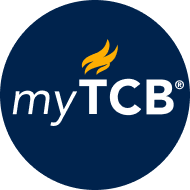
Through interviews with seven thriving organizations that reported gains in both productivity and employee engagement/work-life balance as well as analysis of new survey data, this study explores how organizations can respond to the tumultuous events of 2020-21 and recreate work in ways that maintain productivity while enhancing their employees’ experience and contributing to a healthy organizational culture.
As a result of the COVID-19 pandemic, virtually every employee in America has experienced dramatic change in their work life at the same time that they have been confronted with economic uncertainty and isolation from family and friends. Millions became unemployed. Many in essential roles risked their health on a daily basis to serve the public. Many professional and office employees suddenly began performing their jobs remotely, and many are likely to continue to do so postpandemic. Meanwhile, several incidents since the start of the pandemic have caused a heightened awareness of racial injustice and renewed employer commitment to addressing it.
In addition to redefining where many employees conduct their work, the pandemic and related crises of 2020 and early 2021 are reshaping the employee experience itself. The Conference Board conducted its second Workplace Reimagined
Program Director, Distinguished Principal Research…
The Conference Board

myTCB® Members get exclusive access to webcasts, publications, data and analysis, plus discounts to events.
